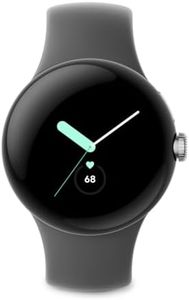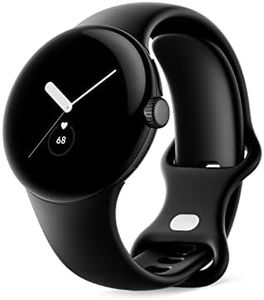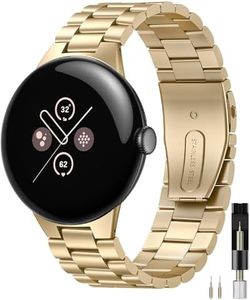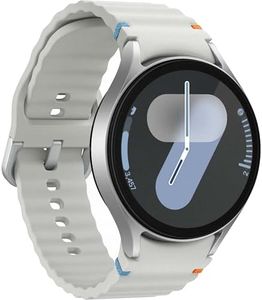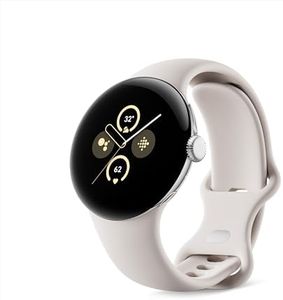We Use CookiesWe use cookies to enhance the security, performance,
functionality and for analytical and promotional activities. By continuing to browse this site you
are agreeing to our privacy policy
10 Best Google Wear Os Watches
From leading brands and best sellers available on the web.Buying Guide for the Best Google Wear Os Watches
Choosing a Google Wear OS watch can be both fun and a bit overwhelming because there are many features to consider. The best approach is to think first about how you plan to use your smartwatch. Are you focused on fitness, notifications, navigation, or simply want a stylish accessory? It's also important to consider features that matter most in your daily life, such as battery life, display quality, compatibility with your phone, and the apps you regularly use. By understanding what each key feature offers and how it applies to your lifestyle, you’ll find a watch that complements both your needs and preferences.Display Type and SizeThe display is the part of the watch you interact with most. Display type often refers to whether the screen is OLED, AMOLED, or LCD. OLED and AMOLED screens usually show deeper blacks and more vibrant colors, which look more appealing and save battery because only the necessary pixels light up. LCD screens are usually brighter and easier to see in sunlight. The size of the display affects how easy it is to read and interact with, but a larger screen means a bigger (and sometimes heavier) watch. If you prefer a sleeker look or have a smaller wrist, go for a smaller display; if you want a screen that's easy to tap and read, consider a larger display.
Battery LifeBattery life tells you how long the watch can go between charges. Some watches last a full day, while others extend up to multiple days with careful usage or in certain battery-saving modes. Think about your charging habits and how much tracking you want; if you don’t mind charging overnight every day, shorter battery life is fine. But if you travel often or want to track sleep, look for longer battery life.
Sensors and Health TrackingWear OS watches come with a variety of sensors, such as heart rate monitors, GPS, SpO2 (blood oxygen) sensors, and sometimes even EKG. These are important if you're interested in fitness and health tracking. If you just need step counts and basic activity data, look for simple sensors. If you run, hike, or cycle, GPS is very helpful for tracking routes. For those especially interested in health trends, more advanced sensors (like SpO2 or EKG) offer deeper insights.
Water ResistanceWater resistance shows how well the watch can handle exposure to water. Watches are usually labeled with ratings like IP68 or 5ATM. IP68 means the device can withstand dust and brief submersion in water. 5ATM means it is water-resistant to 50 meters, suitable for swimming but not deep diving. If you just want protection from rain or sweat, basic water resistance is enough. Swimmers or those who regularly get their watch wet should look for higher water resistance.
Processor and PerformanceThe processor in a Wear OS watch affects how smoothly the device runs: faster processors deliver a more responsive experience, help apps open quicker, and ensure smooth interactions. Older processors may lead to sluggishness, especially as software updates roll out. If you intend to use many apps or multitask, look for watches with more recent, higher-performing chips. If you only use the basics, this may matter less.
Connectivity OptionsConnectivity options refer to how the watch links with your phone and the internet. The main ones include Bluetooth, Wi-Fi, NFC, and sometimes LTE. Bluetooth is necessary for your phone connection, Wi-Fi allows your watch to work on its own when your phone isn't nearby, and NFC lets you use features like contactless payments. LTE versions let you use your watch independently of your phone, even making calls and using data. If you need internet away from your phone or want to leave your phone behind, LTE is useful; otherwise, Bluetooth and Wi-Fi will suffice.
Customization and Strap OptionsCustomization means how much you can personalize the look and feel of your watch, including changing watch faces and swapping straps. Some users like to match straps with outfits or needs (like a silicone strap for workouts and a leather one for dress). Check if the watch uses standard strap sizes for easier replacement. If style is important to you or you want your watch to suit different occasions, look for models with easily swappable straps and a variety of watch face options.
CompatibilityCompatibility refers to whether the watch will work fully with your smartphone. While Wear OS watches usually work best with Android phones, some features might not be available on iPhones. If you use an Android device, almost all features will be accessible; if you use an iPhone, check which functions are limited and decide if they are important to you.
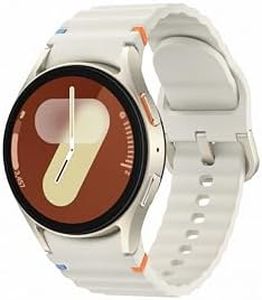

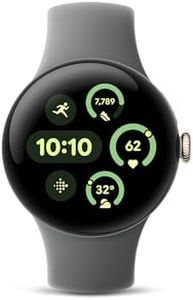

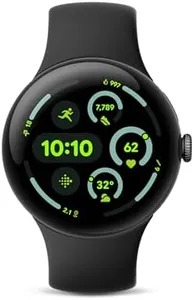
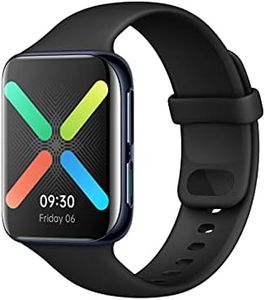
![OnePlus Watch 2R with Wear OS 4 by Google,Snapdragon W5 Chipset,Upto 100hrs Battery Life,1.43’’ AMOLED Display,100+ Sports Mode,Dual Frequency GPS,5 ATM,IP68 & BT Calling [Gunmetal Gray]](https://images-proxy.bestreviews.guide/HFzz-wrRAA5i4mdQI7yM5NB312U=/0x300/https://m.media-amazon.com/images/I/41hsRvicN0L._AC_CX679_.jpg)
